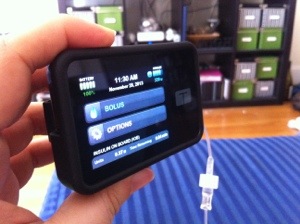I don’t usually do New Year’s resolutions; I’ve found that I am more successful at making changes in my life when I initially realize something needs to change, rather than waiting for an arbitrarily later time. Plus, this year, I need to contain most of my resolve for a potential major life change. For M and I, it is becoming increasingly likely that we’ll need to make a move to Germany in 2014.
You see, 5 years ago I fell in love with a German. M and I moved together from Indiana to Boston and it’s always been understood that when M’s work visa expires, we’d move to Germany for awhile. (Or forever… Don’t tell my mother…) That time is coming in September. Since neither of us is fully ready to move right now (I like my job, moving is expensive and my school loans are barely paid off, our current proximity to Joslin is ideal while we contemplate our future family, etc), we’re working on obtaining a new visa or a green card for M but we’re planning for what is probably the inevitable.
I’ve made some effort to learn German but am still have an underwhelming grasp of the German language. M has decided that the remedy for this is for him to speak to me only in German from now on. This should be interesting.
More importantly (or maybe just equally important), I’ve been reading up on life in Germany for an American expat with diabetes. Unfortunately, that info is not altogether easy to come by. I can rely on M for info about the German social health care system, and the internet has plenty of resources for both diabetics and expats, but what it seems to be lacking is a mixing of the two.
What I’ve learned is that an insulin pump is not the standard of care in Germany and insurance coverage for one needs to be fought for on an individual basis. CGMs are basically never covered and would certainly need to be paid for out of pocket. My poor German language skills are certainly going to make it tricky to find a job (luckily English is widely spoken in science so I might be in luck…) so we are unlikely to be able to afford such extravagant things initially and I haven’t been on MDI in 12 years! This is a slightly terrifying prospect and some first-hand info would be greatly appreciated. (Please help!!)
Clearly diabetes in Germany can’t be all bad. There’s the MySugr app (Ok, it’s from Austria but they speak German so I’m counting it), Mein Diabetes Blog, many, many, diabetes online resources, etc.
Which brings me to the request. I’m asking you, the DOC, to please comment below with your links, advice, first-hand accounts dealing with insurance in Germany, or any information at all about being a diabetic expat in any EU country; we are willing to move anywhere where we can find jobs and D covered. I’m looking for things like insurance for foreigners, any policies regarding diabetics and driving, access to and cost of insulin pumps and CGMS, etc. I plan to do the same and turn this page into a hub full of info for any diabetic looking to make a move to the EU.
Thanks for your help!

















